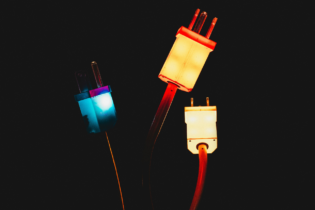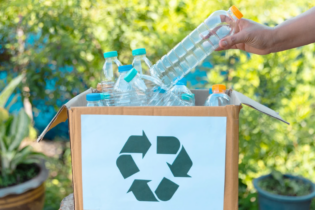A new power plant in the eastern Senegalese village of Kalom is generating electricity, income and well-being. Powered by agricultural waste, the station has lit up homes, lightened women’s domestic burdens and even put a little money in some residents’ pockets.
The generator with a 32KW capacity uses groundnut shells and dried millet stalks for fuel. It was built with US$245 000 (R1.88 million) of funding from DEG (German Investment Corporation) and German municipal power company Stadtwerke Mainz. The local midwife, Ami Mbaye, is delighted to have electric lights in the village. She says she had to rely on storm lanterns when attending a birth at night, but with power in the health centre, it’s much easier to care for patients. “It wasn’t easy for us to work at night. Now we don’t have any problems. But we do need the government to install some additional equipment to make us more effective.” “Everyone used to pay 100 CFA francs (R1.60) per device to charge our cell phone batteries,” said Abdoulaye Faye, a teacher in Kalom. “We would give them to a young guy who would take them to the closest town, Fatick, more than 20km away. Then you had to wait a week to get them back. Now we just charge them at home.” Almami N’Diaye, who runs the plant, says that to begin with, it will generate only 15% of its total capacity.“To light up the village for a week, we need three tonnes of shells and millet chaff. We’re not lacking in fuel because the villagers have the habit of saving these residues after the harvest.”
Wolla Ndiaye, a senator and resident of the village, said that each house pays for its consumption, depending on the number of bulbs and electrical appliances it uses, and the price per KWh 250 CFA (R4.00).“All 1 300 residents living on the village’s 115 stands are connected to the grid, except for three houses that are still under construction. And more than 80% of the power generated is not yet being used.” However, in order to operate the plant at a break-even point, some 15 surrounding villages will have to be connected to the power station.
According to Alioune Diouf, head of monitoring for the National Biogas Programme at the energy ministry, the government initiated the programme in Senegal in 2006, with the objective of ensuring the sustainable supply of peri-urban and rural households with energy for lighting and cooking. “Waste-based electricity generation projects were also launched in 2008 in the Kaolack, Fatick, Ziguinchor and Kolda regions.” He added that 325 bio-digesters were set up in these regions in the western and southern parts of the country between June 2010 and mid-2012. Source: African Business Review







